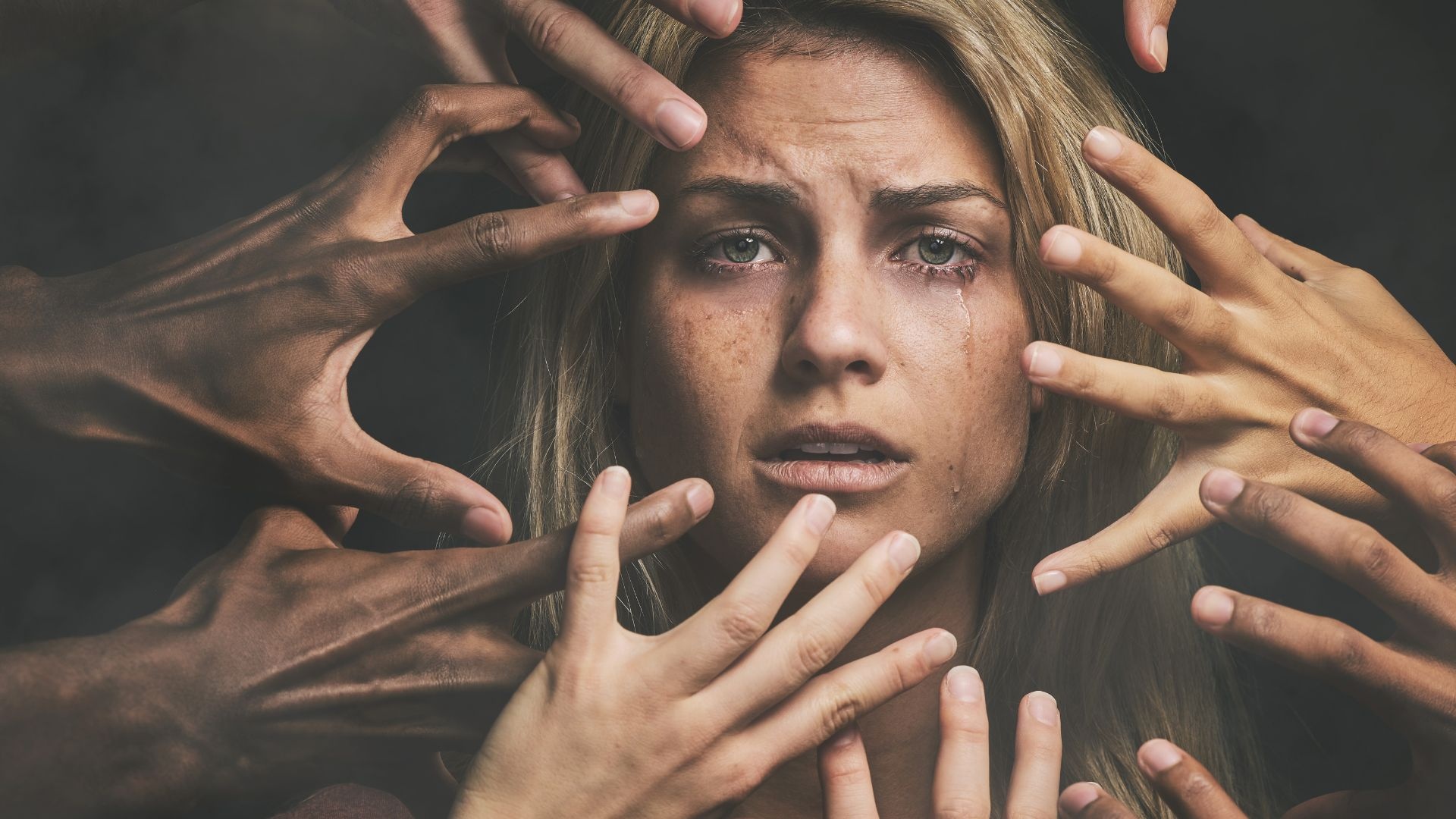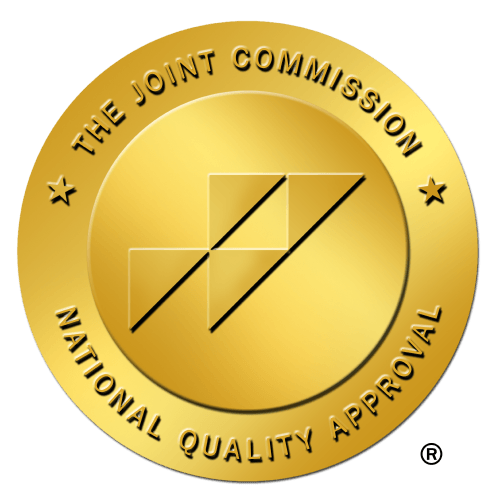Phobic Anxiety Disorder


Struggling with phobic anxiety disorder? Learn about its symptoms, causes, and treatment options to regain control and overcome intense, irrational fears.
Phobic anxiety disorder is more than just feeling nervous—it's an overwhelming, irrational fear of specific situations, objects, or activities that can severely disrupt daily life. Unlike general anxiety, which is often tied to broad concerns, phobic anxiety is triggered by specific fears, leading to avoidance behaviors that can limit personal and professional opportunities.
Left untreated, these fears can intensify, causing isolation and distress. The good news? Phobic anxiety disorder is highly treatable. At The Forge Recovery Center, we offer evidence-based therapies to help individuals confront and manage their fears, regain control, and build a more fulfilling, anxiety-free life.
What Is Phobic Anxiety Disorder?

Phobic anxiety disorder is an intense, irrational fear of a particular object, situation, or activity that triggers extreme distress and avoidance behaviors. Unlike general anxiety, which may involve persistent worry about various aspects of life, phobic anxiety is specifically linked to a single trigger, leading to a disproportionate fear response. Even when the perceived threat is minimal or nonexistent, individuals with this disorder experience overwhelming panic, making it difficult to function normally.
Phobic anxiety disorder falls under the broader category of anxiety disorders, a group of mental health conditions characterized by excessive fear and worry. The key hallmark of this disorder is avoidance—people with phobias go to great lengths to evade their fear triggers, which can interfere with daily life, relationships, and work.
There are three primary types of phobic anxiety disorders:
Specific Phobias: Involve an intense fear of particular objects or situations, such as spiders (arachnophobia), heights (acrophobia), or flying (aviophobia). These phobias often develop in childhood and persist into adulthood if untreated.
Social Phobia (Social Anxiety Disorder): A deep fear of social interactions, public speaking, or being judged by others. This can lead to extreme self-consciousness and avoidance of social gatherings, work events, or even everyday interactions.
Agoraphobia: The fear of being in situations where escape might be difficult, such as crowded places, public transportation, or open spaces. This can lead individuals to avoid leaving their homes altogether, significantly affecting their quality of life.
While phobic anxiety disorder can feel overwhelming, it is treatable with the right approach. Recognizing the disorder is the first step toward recovery, and professional treatment can help individuals regain control over their fears and lead a more fulfilling life.
Symptoms of Phobic Anxiety Disorder
Phobic anxiety disorder triggers an intense and irrational fear response when an individual encounters their specific phobia. This fear can manifest both emotionally and physically, often leading to avoidance behaviors that disrupt daily life. While symptoms vary in intensity, they generally fall into three main categories: emotional symptoms, physical reactions, and behavioral changes.
Emotional Symptoms
Overwhelming fear or panic when faced with the feared object or situation, often disproportionate to any real danger.
Anticipatory anxiety, where a person experiences distress just thinking about encountering their phobia.
Feeling powerless or out of control when confronted with the fear trigger.
Severe dread or terror, sometimes leading to full-blown panic attacks.
Physical Symptoms
The body’s fight-or-flight response is activated, causing intense physical reactions such as:
Rapid heartbeat (palpitations) or chest tightness.
Sweating, trembling, or shaking in response to fear.
Dizziness, lightheadedness, or nausea, especially if the phobia involves heights, enclosed spaces, or social situations.
Shortness of breath or hyperventilation, often leading to a sensation of choking.
Cold flashes, hot flashes, or tingling sensations, particularly in extreme cases.
Behavioral Symptoms & Avoidance Patterns
People with phobic anxiety disorder go to great lengths to avoid their triggers, which can significantly interfere with daily life. Avoidance behaviors may include:
Changing daily routines to prevent exposure (e.g., avoiding bridges if afraid of heights).
Refusing to enter certain places or engage in specific activities (e.g., skipping work events due to social anxiety).
Relying on "safety behaviors" like bringing a companion everywhere or always carrying medication to feel secure.
Struggling with work, relationships, or personal growth due to persistent fear.
How Symptoms Vary Based on the Type of Phobia
The severity and nature of symptoms often depend on the type of phobia:
Specific Phobias (e.g., fear of dogs, spiders, or heights) typically cause immediate panic and avoidance of the feared object.
Social Phobia (Social Anxiety Disorder) leads to extreme nervousness in social settings, with physical symptoms like sweating, blushing, or stuttering.
Agoraphobia may cause such intense fear of open spaces or crowds that a person becomes housebound.
Regardless of the type, phobic anxiety disorder can take a significant toll on a person’s mental and physical well-being. Fortunately, professional treatment can help individuals manage their fears and regain control over their lives.
Are You Struggling with Mental Health or Addiction?
We Can Help. Call Us Now!
CALL: 877-839-1772
Causes and Risk Factors of Phobic Anxiety Disorder

Phobic anxiety disorder doesn’t develop without cause—several biological, environmental, and psychological factors contribute to its onset. While some individuals may be genetically predisposed to anxiety disorders, others may develop phobias due to life experiences, learned behaviors, or neurological differences. Understanding these causes can help individuals and mental health professionals address the root of the disorder and develop effective treatment strategies.
Biological Factors: A Genetic Link to Anxiety
Research suggests that phobic anxiety disorder can run in families. If a close relative has an anxiety disorder or specific phobia, the likelihood of developing one increases. This genetic predisposition doesn’t guarantee a phobia will develop, but it makes individuals more vulnerable, especially when combined with environmental triggers.
Environmental Triggers: Trauma and Learned Behaviors
Experiences from early childhood or past trauma often contribute to the development of phobias. Some common environmental triggers include:
Distressing or traumatic events, such as a dog attack leading to a lifelong fear of dogs.
Learned behaviors from parents or caregivers, where children pick up on their family's anxieties (e.g., a parent with a fear of heights may unknowingly reinforce the same fear in their child).
Negative experiences or repeated exposure to fear-inducing situations, such as a difficult social interaction causing the development of social phobia.
Cognitive Factors: Negative Thought Patterns
The way an individual processes fear plays a significant role in phobic anxiety disorder. People prone to catastrophic thinking—assuming the worst will happen—are more likely to develop phobias. For example:
Someone with a fear of flying might constantly visualize a plane crash, reinforcing their anxiety.
A person with social anxiety may believe that any social misstep will lead to extreme embarrassment or rejection.
These irrational thought patterns strengthen the fear response, making the phobia harder to overcome.
Brain Chemistry: Overactivity in the Fear Response
Phobias are linked to dysfunctions in the brain’s fear-processing system, particularly in the amygdala, the region responsible for detecting threats. In individuals with phobic anxiety disorder, the amygdala may be overactive, leading to exaggerated fear responses even when no real danger is present. This heightened reaction makes it difficult for the brain to distinguish between a perceived and actual threat, causing intense panic and avoidance behaviors.
Understanding the Root Cause to Overcome Fear
While the causes of phobic anxiety disorder vary, most cases involve a combination of genetic predisposition, life experiences, thought patterns, and brain chemistry. Identifying these contributing factors is a crucial step in effective treatment, helping individuals break free from their fears and regain control over their lives.
How Phobic Anxiety Disorder Impacts Daily Life
Phobic anxiety disorder goes beyond occasional fear—it can significantly disrupt daily life, making even routine tasks feel overwhelming. The intense anxiety triggered by phobias often leads to avoidance behaviors, which can negatively impact relationships, career opportunities, and overall mental health. Left untreated, phobic anxiety can create a cycle of isolation, stress, and emotional distress.
Struggles with Relationships, Work, and Social Life
Individuals with phobic anxiety disorder often find it difficult to maintain healthy relationships or succeed in professional environments. Depending on the type of phobia, challenges may include:
Avoiding social situations due to extreme fear of embarrassment or judgment (social phobia).
Declining job opportunities or promotions if they involve public speaking, travel, or exposure to their feared trigger.
Strained personal relationships, as loved ones may struggle to understand the severity of the phobia.
Diminished quality of life, with individuals missing out on important experiences due to fear-based limitations.
Avoidance Behaviors Can Lead to Isolation and Stress
Avoidance is a defining characteristic of phobic anxiety disorder, and while it provides short-term relief, it ultimately reinforces fear. Over time, this avoidance can:
Limit personal freedom, as individuals structure their lives around avoiding their phobia.
Cause emotional distress, as missing out on activities leads to frustration and loneliness.
Increase dependence on others, leading to reliance on friends, family, or "safe spaces" to function.
Heighten overall stress levels, as the constant fear of encountering the phobia remains in the background.
Co-Occurring Disorders: Depression and Substance Abuse Risks
When left untreated, phobic anxiety disorder can contribute to additional mental health challenges, including:
Depression: The limitations imposed by phobias can lead to feelings of hopelessness, low self-esteem, and social withdrawal.
Substance Abuse: Some individuals turn to alcohol or drugs as a coping mechanism to numb their anxiety, leading to a cycle of dependency.
Generalized Anxiety or Panic Disorder: The persistent fear and avoidance behaviors can evolve into broader anxiety issues, affecting multiple aspects of life.
Breaking the Cycle of Fear
The impact of phobic anxiety disorder can be overwhelming, but it is treatable. Seeking professional help can empower individuals to manage their fears, regain confidence, and lead a more fulfilling life. At The Forge Recovery Center, we provide personalized, evidence-based treatments to help individuals overcome their phobias and restore their well-being.
Are You Struggling with Mental Health or Addiction?
We Can Help. Call Us Now!
CALL: 877-839-1772
Treatment Options for Phobic Anxiety Disorder

While phobic anxiety disorder can feel overwhelming, it is highly treatable with the right approach. Effective treatment focuses on reducing fear responses, changing thought patterns, and helping individuals regain control over their lives. A combination of therapy, medication, and holistic techniques can provide long-term relief. At The Forge Recovery Center, we specialize in personalized, evidence-based treatments that empower individuals to confront and overcome their fears.
Cognitive Behavioral Therapy (CBT): Restructuring Irrational Thoughts
Cognitive Behavioral Therapy (CBT) is one of the most effective treatments for phobic anxiety disorder. It helps individuals recognize and reframe irrational fears, replacing them with more balanced, realistic thoughts. Key components of CBT for phobias include:
Cognitive restructuring: Identifying and challenging distorted beliefs about the feared object or situation.
Exposure therapy: Gradual, controlled exposure to the phobia trigger to desensitize fear responses.
Coping strategies: Teaching practical techniques to manage anxiety when confronted with a phobic situation.
Exposure Therapy: Facing Fear in a Safe Environment
A core part of CBT, exposure therapy is designed to reduce fear over time by systematically exposing individuals to their phobia in a safe and controlled manner. This can involve:
Imaginal exposure: Visualizing the feared object or scenario.
Virtual reality exposure: Using technology to simulate real-life encounters with the phobia.
Gradual real-world exposure: Starting with less threatening experiences and progressing to direct contact with the fear trigger.
Exposure therapy helps individuals retrain their brain’s fear response, proving that their feared situation is not as dangerous as they perceive.
Medication: Managing Symptoms for Better Coping
For some individuals, medication can help manage the physical and emotional symptoms of phobic anxiety disorder. While not a cure, medication can be used alongside therapy for improved outcomes. Common options include:
Selective serotonin reuptake inhibitors (SSRIs) and benzodiazepines: Help manage anxiety symptoms, especially for severe phobias.
Beta-blockers: Reduce physical symptoms like rapid heartbeat and trembling.
Sedatives or anti-anxiety medications: Used in short-term cases, such as before a flight for those with aviophobia.
Medication is most effective when combined with therapy and behavioral interventions.
Mindfulness and Relaxation Techniques: Reducing Stress Responses
Mindfulness and relaxation techniques can help individuals reduce overall anxiety levels and stay calm when facing their fears. These include:
Meditation and deep breathing: Slowing the heart rate and promoting relaxation.
Progressive muscle relaxation: Releasing tension in the body to decrease anxiety.
Visualization techniques: Mentally rehearsing positive, calm experiences in anxiety-inducing situations.
Regular practice of these techniques rewires the brain’s response to fear, making it easier to manage phobic triggers.
Professional Treatment at The Forge Recovery Center
At The Forge Recovery Center, we take a personalized approach to treating phobic anxiety disorder. Our team of experts tailors therapy plans to each individual’s unique fears, experiences, and treatment goals. Our approach includes:
Individualized therapy sessions using CBT, exposure therapy, and holistic techniques.
A supportive environment to safely confront fears and build confidence.
Comprehensive care that addresses co-occurring conditions like depression, PTSD, or substance use.
Break Free From Fear with Expert Support
Living with phobic anxiety disorder can feel limiting, but with the right treatment, recovery is possible. At The Forge Recovery Center, we provide compassionate, evidence-based care to help individuals conquer their fears and reclaim their lives. If you or a loved one is struggling with a phobia, reach out today to start your path toward freedom from fear.
Are You Struggling with Mental Health or Addiction?
We Can Help. Call Us Now!
CALL: 877-839-1772





